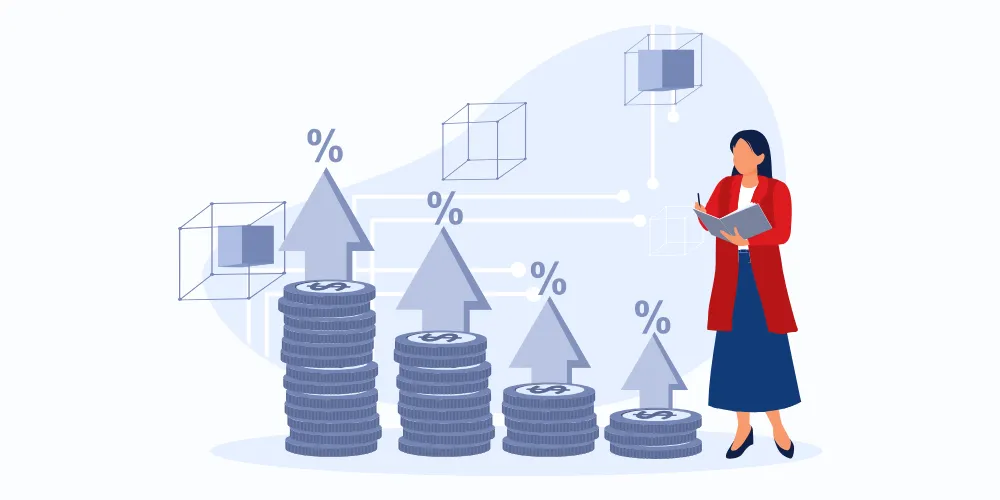The cost of sales includes all direct expenses tied to producing and delivering a product or service. This typically covers raw materials, labor, packaging, shipping, commissions, and discounts. It excludes indirect costs like rent or marketing, focusing only on what’s necessary to generate revenue directly.
Understanding and Calculating the Cost of Sales
- Amit Jain
- May 16, 2025
- 4 min read
- Last updated on Oct 15, 2025
Introduction to Cost of Sales
Every business, whether big or small, shares a common goal: profitability. At the heart of measuring business success is understanding the cost of sales. But what exactly is the sales price, and why is it significant? Simply put, the cost of sales encompasses the direct costs attributable to the production of the goods sold by a company. These costs include materials, labor, and other related expenses directly tied to the production of a product.
Understanding the cost of sales is essential because it directly affects the gross margin, a crucial indicator of a company's financial health. Businesses can ensure a healthier bottom line and improve their profit margins by managing and reducing these costs.
The Cost of Sales Equation
The core of understanding sales costs lies in mastering the cost of sales equation. The standard formula is:
Cost of Sales = Beginning Inventory + Purchases - Ending Inventory
- Beginning Inventory: Represents the inventory’s value at the start of the period.
- Purchases: Accounts for all inventory bought during the period.
- Ending Inventory: The inventory value remaining at the period's end.
This equation forms the backbone of calculating the cost of sales and allows businesses to determine the direct costs incurred during a specific timeframe.
Importance of Accurately Calculating Cost of Sales
Why does accurately calculating the cost of sales matter? The stakes are high because this figure significantly impacts a business's financial statements. Essentially, getting the numbers right can play a pivotal role in strategic planning and in redefining business operations.
An accurate cost-of-sales calculation helps stakeholders pinpoint areas of inefficiency and make informed decisions about pricing, budget adjustments, and forecasting. Additionally, clear insights into these figures can enhance investor confidence and foster better stakeholder relationships.
Steps to Calculate Cost of Sales
Here’s a straightforward guide to calculating the cost of sales using our primary equation:
- Identify the Beginning Inventory: Start by documenting the value of the current inventory at the beginning of the period.
- Record Purchases: Track all purchases made within the term, including raw materials and goods required for production.
- Evaluate Ending Inventory: At the close of the period, assess the value of the remaining inventory.
- Apply the Cost of Sales Equation: Use the formula: Cost of Sales = Beginning Inventory + Purchases - Ending Inventory.
For example, if your beginning inventory is $10,000, purchases amount to $5,000, and ending inventory stands at $3,000, your cost of sales would be: $10,000 + $5,000 - $3,000 = $12,000.
Common Mistakes and How to Avoid Them
Calculating the cost of sales can be difficult and severely impact business operations. Common mistakes include not accurately updating inventory levels, forgetting associated costs like freight, or incorrectly categorizing expenses.
To avoid these pitfalls, ensure you regularly update inventory records, include all relevant costs, and use consistent methods for categorizing and recording expenses. Consider scheduled audits to verify data accuracy.
Role of Technology in Calculating Cost of Sales
In the digital age, technology is a powerful ally in calculating the cost of sales with precision. Tools like inventory management systems and sales incentive platforms like Incentivate offer efficient solutions. They streamline data collection, automate calculations, and improve reporting accuracy.
Integration with accounting software further enhances accuracy and helps in reducing manual errors, allowing businesses to focus more on strategy than number crunching.
Conclusion and Key Takeaways
Understanding and accurately calculating the cost of sales equation is vital for fostering business efficiency and profitability. By leveraging technology, businesses can ensure accuracy, save time, and make data-driven decisions that enhance margins and overall growth.
Accurate cost-of-sales calculations can be a differentiator in a competitive marketplace, enabling smarter, more informed business choices and fostering sustainable growth.
Frequently Asked Questions
What is included in the cost of sales?
How often should businesses calculate the cost of sales?
Businesses should calculate the monthly or quarterly sales cost, aligning with financial reporting cycles. Frequent calculation helps monitor profitability trends, make timely pricing or cost adjustments, and ensure accurate forecasting. Monthly tracking offers better control and insight for businesses with high sales volume or variability.
Can automation help calculate the cost of sales?
Yes, automation significantly improves the cost of sales calculation. It streamlines data collection from multiple systems, ensures accuracy, and reduces manual errors. Automated tools can track real-time sales, commissions, and inventory costs, enabling faster decisions, better insights, and more efficient financial planning across the organization.
How can businesses reduce their cost of sales?
Businesses can reduce the cost of sales by optimizing supply chains, negotiating better vendor terms, automating sales processes, and refining incentive structures. Streamlining operations and using data-driven insights to monitor sales performance also helps maintain cost efficiency while boosting revenue and profit margins.




